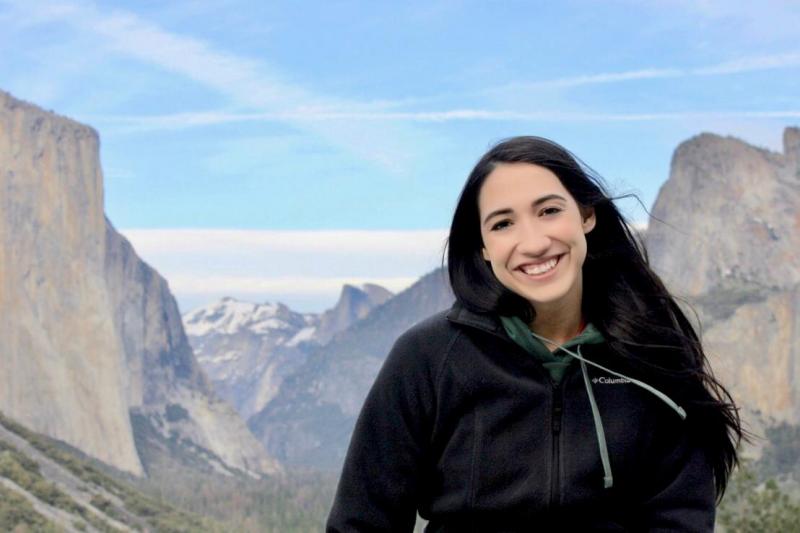
She enters her readings into a Tuolumne River Trust spreadsheet. Then she starts her research, looking for patterns among the spreadsheet readings of temperatures, water impurities, river flows and wildlife. Geography is her major; forest ecology and watershed health are her twin passions.
One day, the Trust hopes this data will inform the work of researchers and debates of policymakers regarding water use. An Aug. 19 San Francisco Chronicle article on the “California water wars” featured Martinez gathering river data in its photos.
“It’s really important to work for something you believe in,” Martinez said. Growing up in Twain Harte, she said, “I liked the outdoors, but I didn’t know that it could be a job. It doesn’t even feel like a job.”
This job, a Tuolumne River Trust internship, fits hand in well-weathered glove with her environmental and agriculture classes. “A lot of stuff I learn in class applies to what I do at work and vice versa,” she said.
Her work, up to 20 hours a week, is paid from a Water Resources Experiential Learning for USDA Careers grant. Martinez assists with the Tuolumne River Trust’s Citizen Water Quality Monitoring program, as well as habitat and watershed restoration and educational programs, said Meg Gonzalez, Tuolumne River Trust community education director.
“It is a win-win,” Gonzalez said. “With Stan State student interns helping a local environmental nonprofit extend our reach and work, while gaining hands-on experience and career exploration.”
Martinez is applying to graduate school, leaning toward a USDA career in forestry or agriculture, two sides of the longstanding tug of war over water. As a kid growing up in the Tuolumne River region, weekends meant stream beds to hike, scraped knees and slippery water critters to chase. Moving to the Central Valley, where agriculture leads community uses of the river, gave her a whole new perspective.
“You never consider when you buy your food at a grocery store that it was fed by water you played in as a child,” Martinez said. “You get such tunnel vision when you come from a place where everyone sees things one way. Do I think the river needs to be protected? Absolutely. But agriculture has to be able to function, too. These things need to coexist.”
In her classes, sustainable agricultural practices, careful forestry management and science-led stewardship of the watershed make coexistence sound simple and sensible. In the field, she has learned nothing is quite so clean or easy. Such insights, and how she might one day play a role in helping wilderness and agriculture co-exist, never occurred to her before she came to Stan State.
A first-generation college student, Martinez credits Ceres High School counselors for helping raise her expectations and showing her how financial aid was available to help fund her college education.
“College really has changed my life,” said Martinez, who this year is president of the Stan State Geography Club. She participated in a Merced County GIS project to put land parcels into a digital map.
Two other geography projects she worked on were entered into California Geographical Society cartography competitions. One mapped the strength of wi-fi signals around Stan State. Another mapped heat build-up in plants over time. “Geography has allowed me to explore all of this,” she said. “College can really open doors for you.”